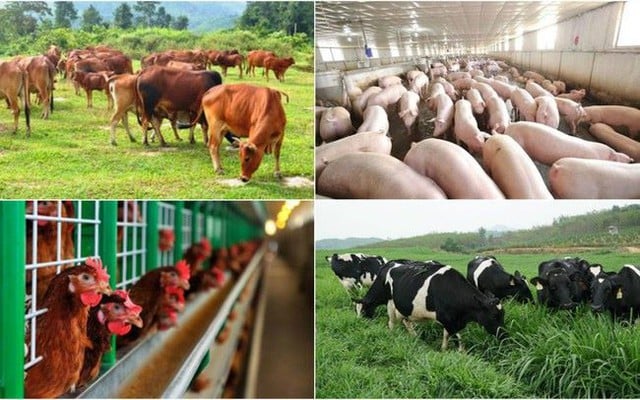November 25, 2025 | 00:15 GMT +7
November 25, 2025 | 00:15 GMT +7
Hotline: 0913.378.918
November 25, 2025 | 00:15 GMT +7
Hotline: 0913.378.918

The project plans to replicate the biogas waste treatment model and provide low-emission gas for livestock, poultry and aquaculture households. Photo: VGP.
The delegation of the two organizations worked directly with specialized agencies of Soc Trang and Bac Lieu provinces, experts and lecturers from Can Tho University and community representatives in Long Phu district and Dong Hai district.
Vietnam is the world's third-largest shrimp exporting country as of December 2023. Aquaculture and seafood processing, including shrimp, have created livelihoods for 5 million Vietnamese workers. In Bac Lieu and Soc Trang, south of the Mekong River, there are about 200,000 people seeking a livelihood based on brackish water shrimp farming and processing, bringing about 25-35% of the provinces' GDP.
However, solid and liquid waste sources from aquaculture also cause soil, water and air pollution, contributing to worsening global warming.
ChildFund Korea, with special funding from the Korea International Cooperation Agency (KOICA) and ActionAid Vietnam, have agreed to cooperate in building sponsorship programs in the Mekong Delta region to contribute to reducing solid waste from agriculture and improving environmental quality in this region.
The initial cooperation program is expected to have three phases lasting 9 years, of which phase 1 from 2024-2026 has the following expected results: Reducing greenhouse gas emissions and solid waste from agriculture; Support the establishment of a rapid response mechanism to surface water pollution.
The budget for phase 1 is expected to be equivalent to US$ 1.5 million, supporting 320,000 people, reducing an average of 3,250 kg of solid waste from each farming household after three years of project implementation.
The project plans to replicate the biogas model for waste treatment and providing low-emission fuel for livestock, poultry and aquaculture households; strengthen community capacity in agricultural solid waste management; develop an internal monitoring mechanism for water quality and solid waste management on farms in the region; Support programs that encourage environmental protection and waste reduction.
The above contents were discussed by technical staff from ChildFund and ActionAid Vietnam and local agency officials, scientists, and representatives of beneficiary households during two active working days. The parties have agreed on the content of the coordination mechanism, development of action plans and technical measures for effective implementation, supporting the community to access and practice livelihoods to protect the environment and reduce gas emissions, and energy conversion in sustainable agricultural development in the coming time.
Sharing with the working group, Mr. Nguyen Trung Hieu, Deputy Director of the Department of Agriculture and Rural Development of Bac Lieu province, said that the funding programs of ActionAid and its partners are all practical and linked to people's livelihoods, especially in the context of agricultural development. Fisheries are a local priority but are causing some challenges regarding environmental pollution and increased greenhouse gas emissions. Vietnam strives to have US$9 billion from annual shrimp exports and urgently needs low-emission shrimp products that benefit farmers, processors and consumers.
Translated by Tuan Huy

(VAN) ILDEX Vietnam 2026 will connect more than 250 exhibitors and 10,000 visitors from 40 countries.

(VAN) Hue City is accelerating efforts to combat IUU fishing, aiming to remove EC’s 'yellow card' and promote sustainable fisheries development.

(VAN) The recent torrential downpours and unprecedented flooding in the Southern Central Coast are a highly unusual meteorological and hydrological event.

(VAN) The Southern Central Coast and Central Highlands regions have suffered massive agricultural losses, with over 80,000 hectares of rice and crops, alongside millions of livestock, being swept away, causing severe damage to farmer livelihoods.

(VAN) Trieu Son commune deploys a 'virtual assistant' to help residents complete administrative procedures.

(VAN) Applying green technology in rural water supply and sanitation helps improve resource efficiency, protect the environment, and enhance community living standards.

(VAN) Developing biosecure livestock production is the key that helps Tuyen Quang form linked chains in livestock production and build its brand in the market.